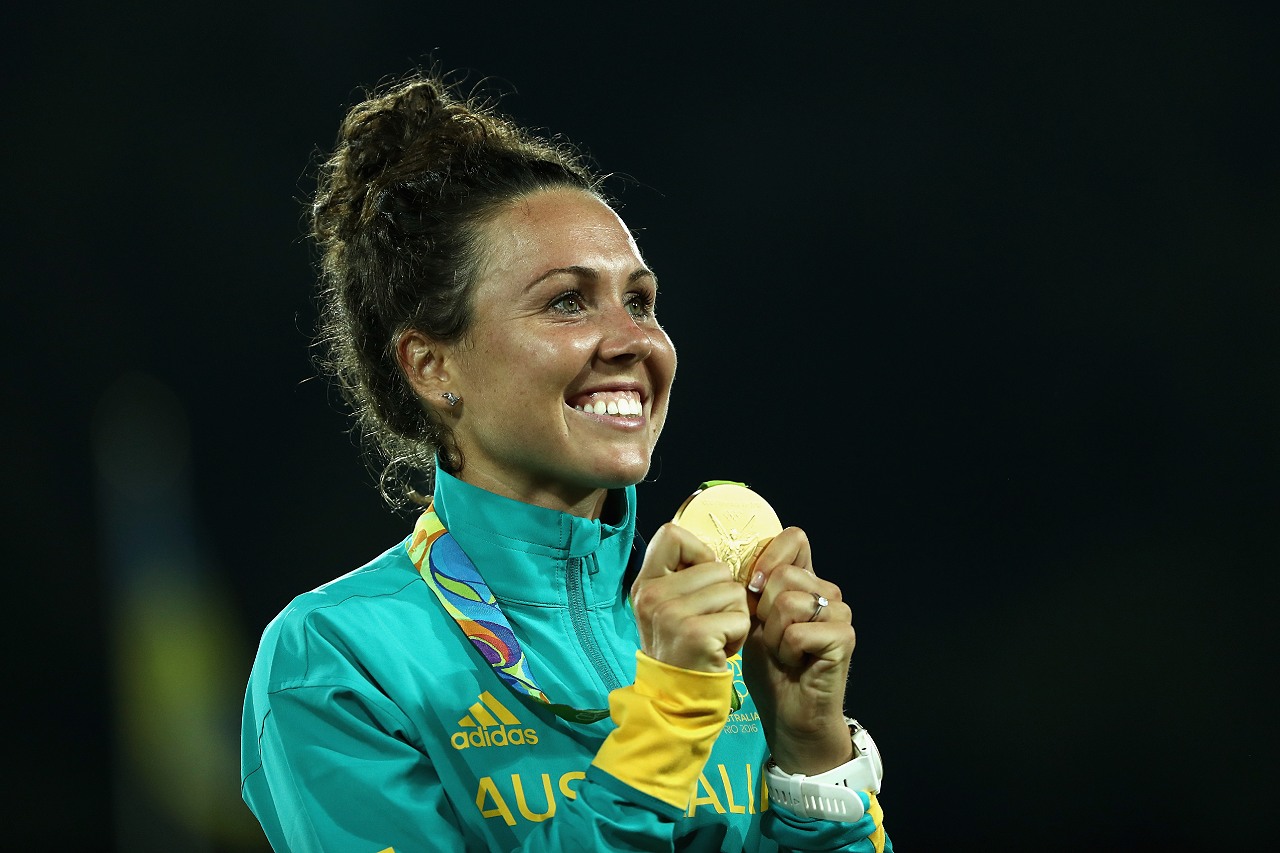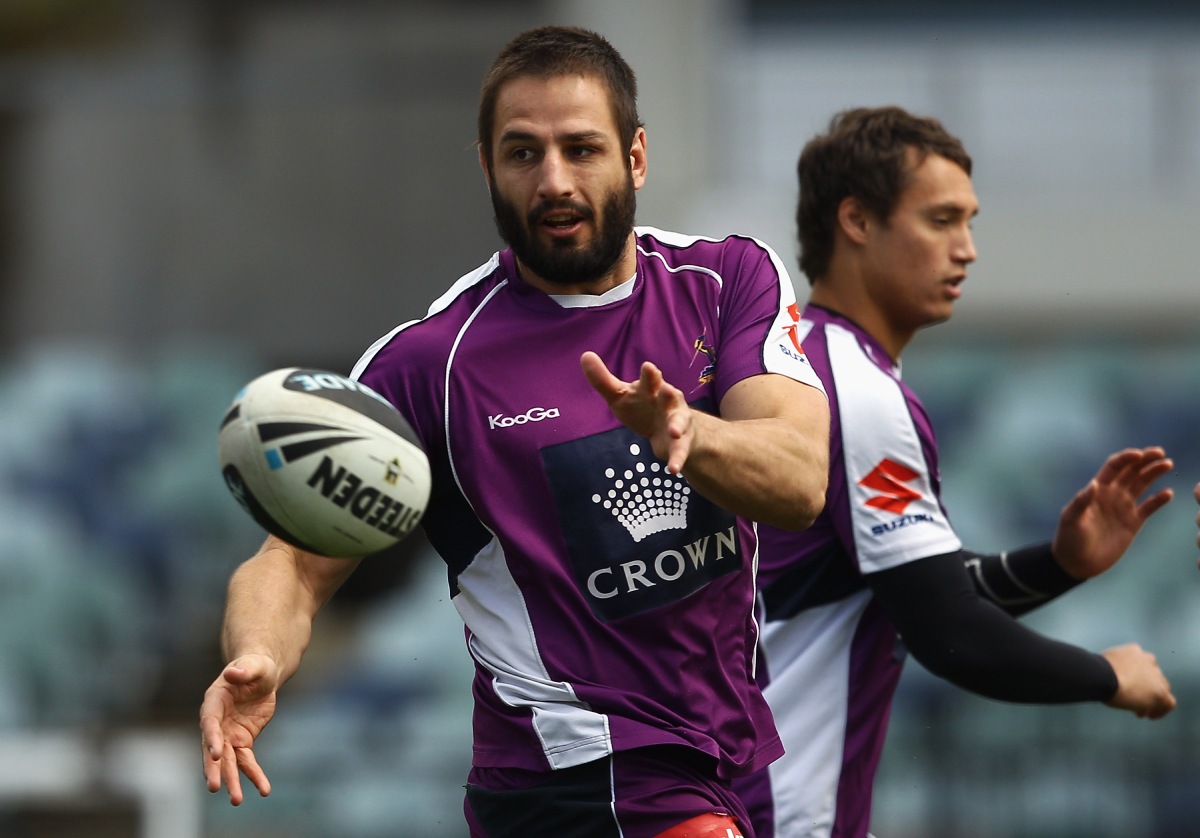Coronavirus has had a massive impact on athletes everywhere.
Keep it in perspective, mind you. There are so many other bigger things going on in the world right now. But that won’t change that our Olympians and Paralympians will be hurting, having been preparing for Tokyo for four years, sometimes eight, now the event has been postponed.
Or look at the NRL. To get through the torture of a preseason only for the season to be put on hold after two weeks, exactly when all you want to be doing is playing out on the field after doing all the preparation, would be really disappointing.
Take the Storm, for example. Having been there and done that, I guarantee no one can comprehend just how intense preseasons are in Melbourne under Craig Bellamy. Training, video sessions, rehab and recovery for ten hours a day, three months in a row.
There’s wrestling every single day, a week-long military-style bootcamp which is mentally and physically draining. It’s easy to look at all the players who’ve come through the Storm – guys like Cam Smith, Billy Slater and Cooper Cronk – and think they’ve just had some talented blokes, but so much hard work has gone into their success. I actually rate getting through a preseason down there as one of my career highlights.
So their players now, to have done all the hard work and now have to hit pause once the easy part – the season itself – has only just started, will be disappointed.
This is bigger than sport though. The world’s never seen anything like this before. It was the right move to put the season on pause, and hopefully sport – not just the NRL or Paralympic and Olympic sport but sport in general – does survive.
In some cases, this represents an opportunity. Chloe Esposito won gold in Rio, but wasn’t going be able to defend her title this year because she’s due to give birth in August. Now with the Olympics postponed by a year, she’s in the frame to go to Tokyo next year.

Athletes can use the time to do a bit of study, and it’s wonderful they can actually get in and start work on a diploma, university degree, or other educational course.
Studying and preparing for what comes after sporting life is an important part of a sportsperson’s welfare. And that wider area of athlete wellbeing is something the Australian Institute of Sport, through the Athlete Wellbeing and Engagement program (AW&E), is doing some really important work in.
We’re involved with Olympic, Paralympic and Commonwealth Games sports. What those athletes have to go through to achieve their goals every four years, putting their lives on hold with largely no financial gain, deserves the utmost respect.
AW&E is all about preparing them for not only their sporting journey and helping them achieve what they want to in their career, but also looking to the future.
It’s about allowing these competitors to integrate back into society after they’ve finished their time in sport by giving them a set of tools to help their career and education, mental health, general life-building skills, and connection to the community.
It’s about creating better people as well as better athletes. And all of that stuff off the field actually translates to performance on it.
Mental health is a strong piece of that strategy. A lot of that involves education – having psychologists talking to sports and their athletes about good strategies – but also making sure it’s not just a reactive approach to mental ill-health. Ensuring everyone’s proactive around maintaining good mental health is just as important.
The overall strategy is far more holistic than that; having athletes connect to the community is another key area.
When I was playing footy, when you’d roll into training on a Monday morning you’d often get a ‘promo notice’ in your pigeonhole. Essentially, it was what promotional work you’d have to do that week.
It might be going to a school, or when I was at the Knights, it was going up to the John Hunter Hospital up to the Starlight room, maybe for a coaching clinic.
<!– –> var varrando_css = ‘.vr-endscreen-row .vr-icon { font-size: 32px; } ‘
+ ‘.vr-endscreen-row .vr-text { font-size: 32px; } ‘
+ ‘.vr-endscreen-row { display: none; } ‘
+ ‘.vr-startscreen { background: #000; } ‘
+ ‘.vr-icon-control { display: none; } ‘
+ ‘.vr-endscreen { background: #000; } ‘
+ ‘.vr-spinner-icon { display: none; } ‘
+ ‘.vr-startscreen { box-shadow: none; } ‘
+ ‘.vr-progress { background-color: #6d31e0 } ‘
;
var varrando_options = {
size: ‘fill’,
closeCompleted: true,
license: ‘Mk5XWnExrXC8fKtiZ4eIkahoa4ePhpOaVIh5zeGgZX6KjqZTXnDLfKtjrw==’,
closeOffset: -1, // don’t show close button
showWhen: ‘adLoaded’,
ads: {
useOnlyHtml5: true,
imaFallback: false,
adBreaks: []
},
skinCss: varrando_css
};
var varrando_vast_sources = {
dfp: ‘https://pubads.g.doubleclick.net/gampad/ads?sz=640×480&iu=/21624748633/Article/InlineVideo&impl=s&gdfp_req=1&env=vp&output=vast&unviewed_position_start=1&url=[referrer_url]&description_url=[description_url]&correlator=[timestamp]&cust_params=wordpress_post_id%3D27763%26athlete_name%3DAdam+Woolnough%26category%3DAIS%26mode%3Dproduction%26dfptest%3D%26lead-in%3D%25%25leadin_ad_state%25%25’
}
function init_varrando() {
console.log(“Varrando Init !!”);
// check leadin_ad_state and pass as key-value parameter in DFP VAST URL
var dfp_url = varrando_vast_sources.dfp;
dfp_url = dfp_url.replace(‘%25%25leadin_ad_state%25%25’, leadin_ad_state);
// DFP sourced ad is always first
var ad_sources = [{
tag: { url: dfp_url }
}];
// set out ad sources in the varrando options
varrando_options.ads.adBreaks = ad_sources;
// initialise player
varrando.setupInPage(“varrando_player”, varrando_options, function (event) {
// Player ready
var player = event.target;
console.log( ‘Varrando Player Ready: ‘ + player.getId() );
player.addListener(‘loaded’, function(event) {
// ad ready to play
// animate height to grow into 16:9 aspect ratio player
jQuery(‘.varrando_container’).slideDown();
// add margin-top 10px
jQuery(‘.varrando_container’).addClass(‘mt-10’);
jQuery(‘.varrando_container’).animate({‘padding-bottom’: ‘56.25%’}, 800);
});
player.addListener(‘ended’, function(event) {
// ad finished playback, hide
jQuery(‘.varrando_container’).slideUp();
// remove margin-top 10px
jQuery(‘.varrando_container’).removeClass(‘mt-10’);
jQuery(‘.varrando_container’).animate({‘padding-bottom’: ‘0px’}, 800);
// dispose of player, so it only plays one Ad for cascading.
player.dispose();
});
player.addListener(‘error’, function(event) {
if ( event.isLoadError ) {
// No VAST to show, hide player container and extra padding injected
jQuery(‘.varrando_container’).hide();
console.log(‘Varrando: no Ad to play, fallback to SpotX 5×5’);
load_spotx_fallback_video();
}
});
}, function (message) {
console.log(‘Varrando Page Setup Error: “‘ + message + ‘”‘);
// log errors with varrando
logError(message);
});
}
function logError(errorMessage) {
var errorType = typeof errorMessage;
if (errorType !== ‘string’) {
errorMessage = errorType;
}
new Image().src = ‘https://lgs324.varrando.com/?cat=default&level=error&key=errorKey&msg=’ + errorMessage;
}
// only initialise player when user can scroll the page, which is after any
// sponsor ads have played and on_sponsor_animation_end() has been called.
var varrando_init = null;
var leadin_ad_state = ”;
jQuery( window ).scroll(function() {
// Also check if WinR AdGade is active
if (( varrando_init === false ) && (PVAds.slotsStatus.winR === false)) {
varrando_init = true;
async_load(‘//d27kkruj8fr60l.cloudfront.net/os/7.3/varrando.osembed.min.js’,’js’);
setTimeout(function(){
init_varrando();
},2000);
}
});
It’s about creating better people as well as better athletes. And all of that stuff off the field actually translates to performance on it.
I loved doing those things. A former teammate of mine, Kirk Reynoldson, we often used to go up on our days off, just walk the wards, not in our Newcastle gear, just pop our heads in and say g’day, have a chat to some of the folks in there.
While we formed some really good relationships through that, I know a lot of players were turned off by it – the opportunities were a bit generic, they didn’t line up with what they were really passionate about so weren’t engaging for them. It was a negative experience and they didn’t get involved in anything similar in the future.
Starting at the AIS, I wanted to make sure that it was all around aligning to athletes’ personal values, experiences, beliefs, motivators. The idea is we’re not going to tell you to go do something. Instead, we’re going to create some opportunities and some alignment to charities and causes. The athletes then choose to engage with them.
The uptake has been great, people have been getting involved with the likes of Lifeline, Black Dog, Share A Yarn, and there’s more to come. There are more social issues to talk about. There’s domestic violence, LGBTIQ rights, the list goes on. Athletes want to support them and the community wants sportspeople to get involved as well.
Then there’s helping athletes move on, to transition into whatever comes after their sporting career.
Those messages take time. Athletes have such a small window at the top of their sport, and they have to chuck all their eggs in one basket; putting in massive days, training and rehabbing and trying to achieve everything your body and athletic ability will possibly allow.
Trying to get a message about what comes next into someone who’s as intensely focused as elite athletes are is difficult, so those messages take time.

I’d retired and had a year off before my final season in the NRL with the Storm. But when I called time on my career for good, I had no education and no work experience.
I was given an opportunity playing local footy in Newcastle and working in the coalmines – something which came about after connecting with the community up there – but after 18 months I thought “Is this what I really want to do for the next 30 years?” It was a fantastic environment – good camaraderie, well paid – but it wasn’t something I wanted to do for the rest of my life.
Going through that reflective process then, it provided the realisation that had someone been talking to me ten or twenty years earlier about post-footy life, plans could have been put in place for that eventual retirement well in advance.
You want to create these opportunities and make sure transitions are as smooth as possible – although they won’t always be. You also want the athletes to look back and remember their time in sport fondly.
You don’t want them to go, “Oh, I did ten years of swimming and what did I get out of it? Bung shoulders, no degree, no job prospects, and no connection to the community. I went to the Olympics, but what did the system provide for me for the rest of my life?”
What we want is for them to look back in 20 years’ time, after they retired, and think of their sporting careers fondly.
The post Athlete wellbeing in the time of COVID-19 – and beyond appeared first on AthletesVoice.
Source: Players Voice
Athlete wellbeing in the time of COVID-19 – and beyond

More Stories
2025 NRL: Round 2 Recap
Round 2 Review – The 2-0 Boys
Live: Bulldogs star leaves field with MCL injury